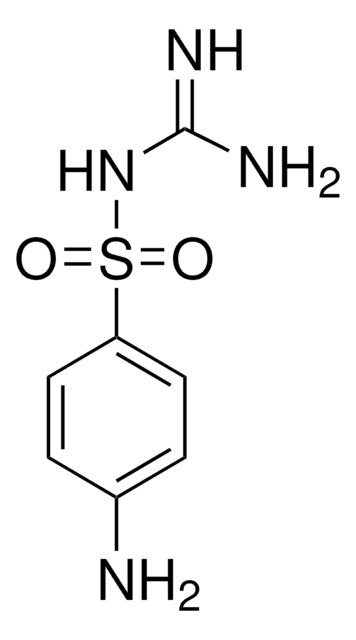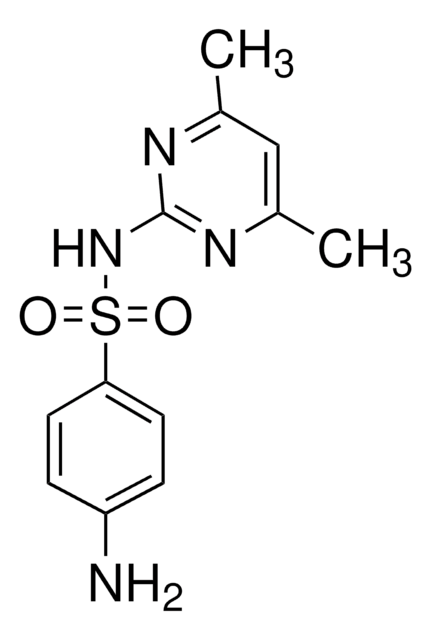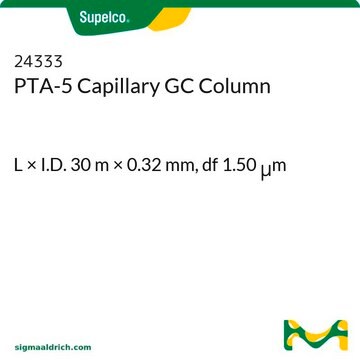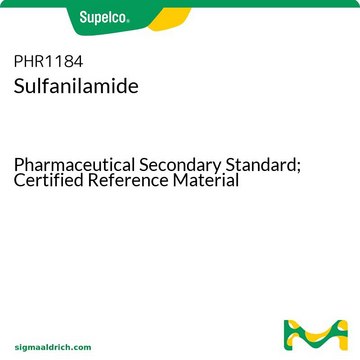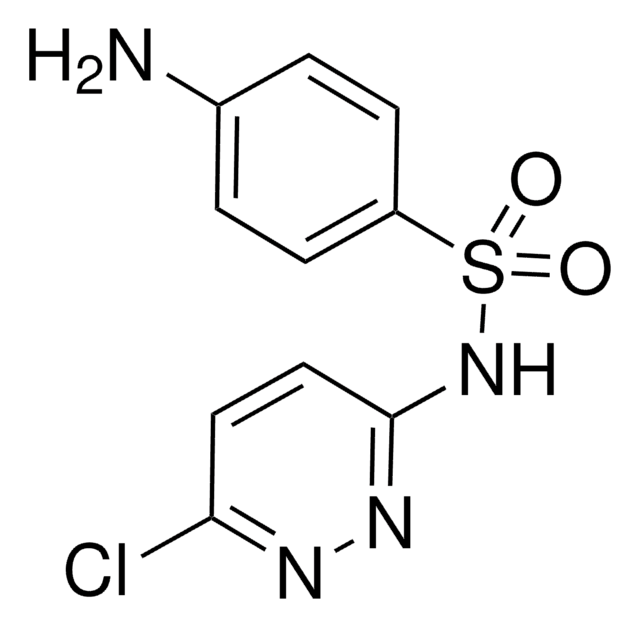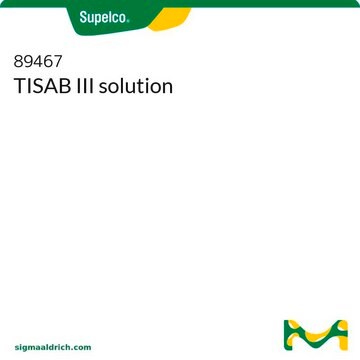32402
Sulfaguanidine
VETRANAL®, analytical standard
Sinonimo/i:
4-Amino-N-(aminoiminomethyl)benzenesulfonamide, 4-Amino-N-guanylbenzenesulfonamide
About This Item
Prodotti consigliati
Grado
analytical standard
Livello qualitativo
Nome Commerciale
VETRANAL®
Durata
limited shelf life, expiry date on the label
tecniche
HPLC: suitable
gas chromatography (GC): suitable
applicazioni
clinical testing
Formato
neat
Stringa SMILE
NC(=N)NS(=O)(=O)c1ccc(N)cc1
InChI
1S/C7H10N4O2S/c8-5-1-3-6(4-2-5)14(12,13)11-7(9)10/h1-4H,8H2,(H4,9,10,11)
BRBKOPJOKNSWSG-UHFFFAOYSA-N
Cerchi prodotti simili? Visita Guida al confronto tra prodotti
Descrizione generale
Applicazioni
- Food samples of animal origin by salting-out supported liquid extraction (SOSLE) and quick, easy, cheap, effective, rugged and safe (QuEChERS) extraction followed by analysis using nanoflow liquid chromatography high resolution mass spectrometry (LC-HRMS).
- Bovine muscle samples by hydrophilic interaction liquid chromatography-electrospray-tandem mass spectrometry (HILIC-ESI-MS/MS) equipped with selected reaction monitoring (SRM) mode of detection.
- Tissues, milk and eggs of food producing animals by ultrasound-assisted extraction (UAE), solid phase extraction (SPE) and LC-MS/MS.
- Beeswax by solid-liquid extraction (SLE), liquid-liquid extraction (LLE), SPE, QuEChERS extraction and ESI-LC-MS/MS with SRM detection.
Note legali
Non trovi il prodotto giusto?
Prova il nostro Motore di ricerca dei prodotti.
Avvertenze
Warning
Indicazioni di pericolo
Consigli di prudenza
Classi di pericolo
Eye Irrit. 2 - Skin Irrit. 2 - STOT SE 3
Organi bersaglio
Respiratory system
Codice della classe di stoccaggio
11 - Combustible Solids
Classe di pericolosità dell'acqua (WGK)
WGK 3
Scegli una delle versioni più recenti:
Possiedi già questo prodotto?
I documenti relativi ai prodotti acquistati recentemente sono disponibili nell’Archivio dei documenti.
I clienti hanno visto anche
Il team dei nostri ricercatori vanta grande esperienza in tutte le aree della ricerca quali Life Science, scienza dei materiali, sintesi chimica, cromatografia, discipline analitiche, ecc..
Contatta l'Assistenza Tecnica.
